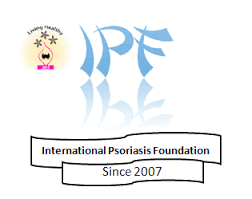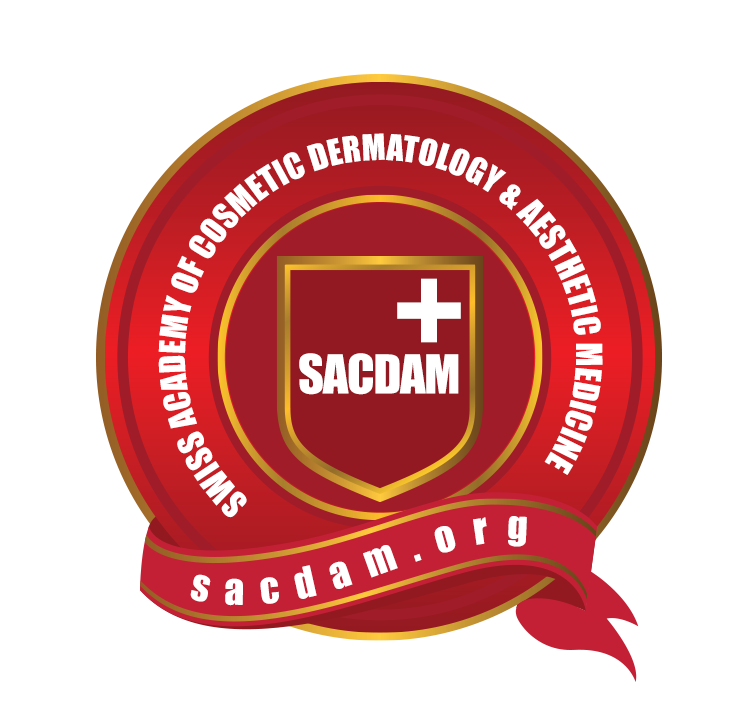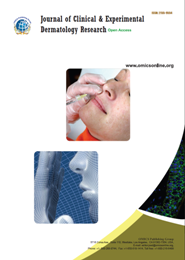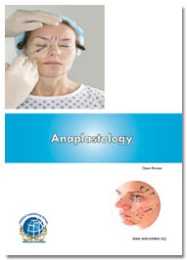Theme: The Skin - Interface with the World
Dermatology 2017

ConferenceSeries Ltd welcomes you to join 14th International Conference on Clinical & Experimental Dermatology scheduled at June 19-21, 2017 Philadelphia, USA. The conference is organized around the theme " The Skin - Interface with the World "
Dermatology Conference is a remarkable event which brings together unique and international mix of large and medium pharmaceutical, diagnostics companies, leading universities and dermatology institutions making the conference a perfect platform to share experience, foster collaborations across industry and academia, and evaluate emerging technologies across the globe.
Dermatology 2017 will schedule and coordinate all meetings with Editorial Board Members and other experts in the clinical and experimental dermatology field across the globe. The scientific program gathers visionaries through the research talks and presentations and put forward many thought provoking strategies. Dermatology conference focus on sharing research on skin cancer, skin care, treatment of skin diseases, cosmetic and aesthetic procedures. Dermatology is chiefly an outpatient specialty, and most patient referrals request an initial diagnosis and treatment of an unknown skin disease or review of more complex and chronic cases beyond the skill of the general practitioner.
ConferenceSeries Ltd deals with a meeting course of action of 1000+ Global Events thorough of 300+Conferences, 500+ Upcoming and Previous Symposiums and Workshops in USA, Europe and Asia with sponsorship from 1000 more sensible social requests and disseminates 700+ Open get to journals which contains more than 30000 unmistakable personalities, reputed specialists as article board people.
Theme: " The Skin - Interface with the World "
Track 1: Dermatological Diseases
Dermatology is the branch of medicine dealing with the hair, nails, skin and its diseases. It is a specialty with both medical and surgical aspects. A dermatologist treats diseases, in the widest sense, and some cosmetic problems of the skin includes Acne is a long-term skin condition characterized by areas of blackheads, whiteheads, pimples, greasy skin, and possibly scarring. Skin cancer & malignancy of epithelial cells, Contact dermatitis, Kawasaki syndrome, Inflammation, scars & rashes,Viral skin diseases.
The global dermatology markets reached $15.8 billion in 2012. The market is expected to reach $16.1 billion in 2013 and $18.5 billion in 2018 for a CAGR of 2.8%. An overview of the global market for treatments of skin diseases, perhaps the most common of human afflications.
Related Dermatology Conferences |Dermatology Meetings| Dermatology Events: 14th International Conference on Clinical and Experimental Dermatology June 19-21, 2017 Philadelphia, USA; 12th Global Dermatologists Meeting, November 6-7, 2017 London, UK; 2nd International Conference on Psoriasis, Psoriatic Arthritis & Skin Infections, October 16- 17, 2017 New York, USA; International Conference on Pediatric Dermatology October 10-12, 2016 Manchester, UK;17th World Dermatology Congress, September 11-12, 2017 Dubai, UAE; 23rd Asia-Pacific Dermatology Conference, October 26-28, 2017 Osaka, Japan; International Conference on Pigmentary Disorders, September 11-12, 2017 Dubai, UAE
Track 2: Clinical Dermatology
Dermatology is the medical science of disorders of the skin. Often skin lesions and disorders are markers of internal disease and mirror the processes occurring within the body. Dermatology has been called "a window through which to see the entire body." Skin consists of distinct layers. The most superficial (most exterior) layer is the epidermis. The epidermis is a stratified squamous epithelium. It has stacked layers of cells. Below the epidermis lies the dermis and below that we find the subcutaneous fat, or sub cutis. Dozens of different skin infections exist, with huge variation in symptoms and severity. Some of the most common skin conditions include Contact allergies, Alopecia, Psoriasis, Blistering disorders, Rashes, Atopic Dermatitis.
According to the American Cancer Society, there are more than 2 million annual cases of basal and squamous cell skin cancer (non melanomas) in the U.S. The occurrence of melanoma, the most dangerous form of skin cancer, has increased from 47,700 diagnoses in 2000 to 75,000 in 2009. While demand for cosmetic dermatology decreased during the recession, the economic recovery combined with an aging population is driving a resurgence of demand for cosmetic procedures.
Related Dermatology Conferences |Dermatology Meetings| Dermatology Events: 14th International Conference on Clinical and Experimental Dermatology June 19-21, 2017 Philadelphia, USA; 12th Global Dermatologists Meeting, November 6-7, 2017 London, UK; 2nd International Conference on Psoriasis, Psoriatic Arthritis & Skin Infections, October 16- 17, 2017 New York, USA; International Conference on Pediatric Dermatology October 10-12, 2016 Manchester, UK;17th World Dermatology Congress, September 11-12, 2017 Dubai, UAE; 23rd Asia-Pacific Dermatology Conference, October 26-28, 2017 Osaka, Japan; International Conference on Pigmentary Disorders, September 11-12, 2017 Dubai, UAE; XII International Congress of Dermatology, April 18-22, 2017 Buenos Aires, Argentina
Track 3: Cosmetic/Aesthetic Dermatology
The field of Aesthetic and Cosmetic Dermatology has gained remarkable interest all over the world. The major advantage of recent years is the high scientific levels of the most significant new developments in techniques and pharmacotherapy and other nonsurgical approaches like Laser resurfacing, Sclerotherapy, Soft tissue augmentation. With an aging population and increasing consumer awareness, demand for high-quality, innovative cosmeceutical products will be on the rise in 2014.
In fact, Global Information, an information service company that partners with research firms worldwide, recently released statistics that stated that the global cosmeceuticals market should reach $31.84 billion by 2016. According to another report released by Medical Insight, the total retail sales of home-use devices and disposables are expected to rise by 11.4 percent per year to exceed $1.5 billion in 2017.
Related Dermatology Conferences |Dermatology Meetings| Dermatology Events:14th International Conference on Clinical and Experimental Dermatology June 19-21, 2017 Philadelphia, USA; 12th Global Dermatologists Meeting, November 6-7, 2017 London, UK; 2nd International Conference on Psoriasis, Psoriatic Arthritis & Skin Infections, October 16- 17, 2017 New York, USA; International Conference on Pediatric Dermatology October 10-12, 2016 Manchester, UK;17th World Dermatology Congress, September 11-12, 2017 Dubai, UAE; 23rd Asia-Pacific Dermatology Conference, October 26-28, 2017 Osaka, Japan; International Conference on Pigmentary Disorders, September 11-12, 2017 Dubai, UAE; XII International Congress of Dermatology, April 18-22, 2017 Buenos Aires, Argentina
Track 4: Skin Cancer
It is estimated that 1 in 52 men and 1 in 77 women in the US will be diagnosed with melanoma in their lifetime. Despite the fact that melanoma is one of the most rapidly increasing forms of human cancer, new treatments have been slow in developing and the mortality rate continues to rise. We now know that there are several well-defined risk factors for this form of cancer.
The American Cancer Society recommends a cancer-related checkup, including a complete skin examination every 3 years if you are aged 20 to 40 years, and every year if you are aged 40 or older. Mohs micrographic surgery is considered the single most effective technique for removing skin cancer, including basal cell carcinoma and squamous cell carcinoma. An extremely precise method, Mohs micrographic surgery allows surgeons to remove a thin layer of tissue and examine it during rather than after surgery. As a result, surgeons know exactly when tissue is free of cancer cells so that healthy tissue is not removed unnecessarily.
Related Dermatology Conferences |Dermatology Meetings| Dermatology Events: 14th International Conference on Clinical and Experimental Dermatology June 19-21, 2017 Philadelphia, USA; 12th Global Dermatologists Meeting, November 6-7, 2017 London, UK; 2nd International Conference on Psoriasis, Psoriatic Arthritis & Skin Infections, October 16- 17, 2017 New York, USA; International Conference on Pediatric Dermatology October 10-12, 2016 Manchester, UK;17th World Dermatology Congress, September 11-12, 2017 Dubai, UAE; 23rd Asia-Pacific Dermatology Conference, October 26-28, 2017 Osaka, Japan; International Conference on Pigmentary Disorders, September 11-12, 2017 Dubai, UAE
Track 5: Bacterial Skin Infections
The skin provides a remarkably good barrier against bacterial infections. Although many bacteria come in contact with or reside on the skin, they are normally unable to establish an infection. When bacterial skin infections do occur, they can range in size from a tiny spot to the entire body surface. They can range in seriousness as well, from harmless to life threatening.
Many types of bacteria can infect the skin. The most common are Staphylococcus and Streptococcus. Skin infections caused by less common bacteria may develop in people while hospitalized or living in a nursing home, while gardening, or while swimming in a pond, lake, or ocean.
Related Dermatology Conferences |Dermatology Meetings| Dermatology Events: 14th International Conference on Clinical and Experimental Dermatology June 19-21, 2017 Philadelphia, USA; 12th Global Dermatologists Meeting, November 6-7, 2017 London, UK; 2nd International Conference on Psoriasis, Psoriatic Arthritis & Skin Infections, October 16- 17, 2017 New York, USA; International Conference on Pediatric Dermatology October 10-12, 2016 Manchester, UK;17th World Dermatology Congress, September 11-12, 2017 Dubai, UAE; 23rd Asia-Pacific Dermatology Conference, October 26-28, 2017 Osaka, Japan; International Conference on Pigmentary Disorders, September 11-12, 2017 Dubai, UAE; XII International Congress of Dermatology, April 18-22, 2017 Buenos Aires, Argentina
Track 6: Fungal Skin Infections
Fungi usually make their homes in moist areas of the body where skin surfaces meet: between the toes, in the genital area, and under the breasts. Common fungal skin infections are caused by yeasts (such as Candida—see Candidiasis) or dermatophytes, such as Epidermophyton, Microsporum, and Trichophyton (seeOverview of Dermatophytoses (Ringworm, Tinea)). Many such fungi live only in the topmost layer of the epidermis (stratum corneum) and do not penetrate deeper. Obese people are more likely to get these infections because they have excessive skinfolds. People with diabetes tend to be more susceptible to fungal infections as well.
Strangely, fungal infections on one part of the body can cause rashes on other parts of the body that are not infected. For example, a fungal infection on the foot may cause an itchy, bumpy rash on the fingers. These eruptions (dermatophytids, or identity or id reactions—see Dermatophytid Reaction) are allergic reactions to the fungus. They do not result from touching the infected area with an aging population is driving a resurgence of demand for cosmetic procedures.
Related Dermatology Conferences |Dermatology Meetings| Dermatology Events: 14th International Conference on Clinical and Experimental Dermatology June 19-21, 2017 Philadelphia, USA; 12th Global Dermatologists Meeting, November 6-7, 2017 London, UK; 2nd International Conference on Psoriasis, Psoriatic Arthritis & Skin Infections, October 16- 17, 2017 New York, USA; International Conference on Pediatric Dermatology October 10-12, 2016 Manchester, UK;17th World Dermatology Congress, September 11-12, 2017 Dubai, UAE; 23rd Asia-Pacific Dermatology Conference, October 26-28, 2017 Osaka, Japan; International Conference on Pigmentary Disorders, September 11-12, 2017 Dubai, UAE
Track 7: Dermatopathology
Dermatopathology is a joint subspecialty of dermatology and pathology and to a lesser extent of surgical pathology that focuses on the study of cutaneous diseases at a microscopic and molecular level. It encompasses analyses of the potential causes of skin diseases at a basic level. Dermatopathologists work in close association with clinical dermatologists. In fact, most of them are trained primarily in dermatology themselves. Dermatologists are able to recognize most skin diseases based on their appearances, anatomic distributions, and behavior. Sometimes, however, those criteria do not allow a conclusive diagnosis to be made, and a skin biopsy is taken to be examined under the microscope or are subject to other molecular tests. That process reveals the histology of the disease and results in a specific diagnostic interpretation. In some cases, additional specialized testing needs to be performed on biopsies, including immunofluorescence, immunohistochemistry, electron microscopy, flow cytometry, and molecular-pathologic analysis.
Related Dermatology Conferences |Dermatology Meetings| Dermatology Events: 14th International Conference on Clinical and Experimental Dermatology June 19-21, 2017 Philadelphia, USA; 12th Global Dermatologists Meeting, November 6-7, 2017 London, UK; 2nd International Conference on Psoriasis, Psoriatic Arthritis & Skin Infections, October 16- 17, 2017 New York, USA; International Conference on Pediatric Dermatology October 10-12, 2016 Manchester, UK;17th World Dermatology Congress, September 11-12, 2017 Dubai, UAE; 23rd Asia-Pacific Dermatology Conference, October 26-28, 2017 Osaka, Japan; International Conference on Pigmentary Disorders, September 11-12, 2017 Dubai, UAE
Track 8: Eczema and Dermatitis
Dermatitis affects about one in every five people at some time in their lives. It results from a variety of different causes and has various patterns.The terms dermatitis and eczema are often used interchangeably. In some cases the term eczematous dermatitis is used. Dermatitis can be acute or chronic or both.
Chronic and incurable skin diseases, such as psoriasis and eczema, are associated with significant morbidity in the form of physical discomfort and impairment of patients' quality of life; whereas malignant diseases, such as malignant melanoma, carry substantial mortality.
Acute eczema (or dermatitis) refers to a rapidly evolving red rash which may be blistered and swollen. Chronic eczema (or dermatitis) refers to a longstanding irritable area. It is often darker than the surrounding skin, thickened (lichenified) and much scratched. And in-between state is known as subacute eczema.
Related Dermatology Conferences |Dermatology Meetings| Dermatology Events: 14th International Conference on Clinical and Experimental Dermatology June 19-21, 2017 Philadelphia, USA; 12th Global Dermatologists Meeting, November 6-7, 2017 London, UK; 2nd International Conference on Psoriasis, Psoriatic Arthritis & Skin Infections, October 16- 17, 2017 New York, USA; International Conference on Pediatric Dermatology October 10-12, 2016 Manchester, UK;17th World Dermatology Congress, September 11-12, 2017 Dubai, UAE; 23rd Asia-Pacific Dermatology Conference, October 26-28, 2017 Osaka, Japan; International Conference on Pigmentary Disorders, September 11-12, 2017 Dubai, UAE
Track 9: Skin Grafting
Skin grafting is a surgical procedure that involves removing the skin from one area of the body and moving it, or transplanting it, to a different area of the body. This surgery may be done if a part of your body has lost its protective covering of skin due to burns, injury, or illness. Skin grafts are performed in a hospital. A skin graft is placed over an area of the body where skin has been lost. Common reasons for a Skin Graft include: Skin infections, Deep burns, Large, Open Wounds, Bed sores.
Skin grafting is only one means of reconstructing a defect in the skin, regardless of the cause of the defect. Most commonly, it is used for reconstruction after the surgical removal of cutaneous malignancies; however, skin grafts are also used to cover chronic nonhealing cutaneous ulcers, to replace tissue lost in full-thickness burns, and to restore hair to areas of alopecia.
Related Dermatology Conferences |Dermatology Meetings| Dermatology Events: 14th International Conference on Clinical and Experimental Dermatology June 19-21, 2017 Philadelphia, USA; 12th Global Dermatologists Meeting, November 6-7, 2017 London, UK; 2nd International Conference on Psoriasis, Psoriatic Arthritis & Skin Infections, October 16- 17, 2017 New York, USA; International Conference on Pediatric Dermatology October 10-12, 2016 Manchester, UK;17th World Dermatology Congress, September 11-12, 2017 Dubai, UAE; 23rd Asia-Pacific Dermatology Conference, October 26-28, 2017 Osaka, Japan; International Conference on Pigmentary Disorders, September 11-12, 2017 Dubai, UAE
Track 10: Hair Transplantation
Hair transplantation is a surgical technique that moves hair follicles from a part of the body called the 'donor site' to a bald or balding part of the body known as the 'recipient site'. It is primarily used to treat male pattern baldness. In this minimally invasive procedure, grafts containing hair follicles that are genetically resistant to balding, (like the back of the head) are transplanted to the bald scalp. Hair transplantation can also be used to restore eyelashes, eyebrows, beard hair, chest hair, pubic hair and to fill in scars caused by accidents or surgery such as face-lifts and previous hair transplants. Hair transplantation differs from skin grafting in that grafts contain almost all of the epidermis and dermis surrounding the hair follicle, and many tiny grafts are transplanted rather than a single strip of skin.
Related Dermatology Conferences |Dermatology Meetings| Dermatology Events: 14th International Conference on Clinical and Experimental Dermatology June 19-21, 2017 Philadelphia, USA; 12th Global Dermatologists Meeting, November 6-7, 2017 London, UK; 2nd International Conference on Psoriasis, Psoriatic Arthritis & Skin Infections, October 16- 17, 2017 New York, USA; International Conference on Pediatric Dermatology October 10-12, 2016 Manchester, UK;17th World Dermatology Congress, September 11-12, 2017 Dubai, UAE; 23rd Asia-Pacific Dermatology Conference, October 26-28, 2017 Osaka, Japan; International Conference on Pigmentary Disorders, September 11-12, 2017 Dubai, UAE
ConferenceSeries Ltd welcomes you to attend the 14th International Conference on Clinical and Experimental Dermatology to be held at Philadelphia, USA during June 19-21, 2017 . Dermatology has evolved into one of the most dynamic specialties in medicine. Advances in cellular and molecular biology have translated into clinical progress in the management of multiple conditions that dermatologists treat. Dermatology is also dedicated to correct the appearance disorders. Indeed, the skin, the largest organ of the human body, is often a place of disease. Skin exposure to environment influences and its importance to the good-looking and well-being requires extra care that can be provided by Dermatology.
The purpose of Dermatology conference is to promote interest, stimulate research, and disseminate information on all aspects of environmental and occupational skin diseases. Our mission is to provide outstanding patient care, train and mentor future leaders in dermatology, and advance dermatologic knowledge .We invite you to join us at the Dermatology 2017, where you will be sure to have a meaningful experience with scholars from around the world.
Dermatology conference aim is to aggregate researchers, academicians and scientists from the Dermatology community and to create an avenue towards robust exchange of information on technological advances, new scientific achievements, and the effectiveness of various regulatory programs towards Dermatology at this event.
Why to attend???
Meet Your Target Market With members from round the world centered on learning regarding dermatology concerns, this is often your single best chance to achieve the most important assemblage of participants from the Universities, Research institutions, and Hospitals. Conduct demonstrations, distribute data, meet with current and potential speaker, create a splash with a replacement wares, and receive name recognition at this 3-day event. World-renowned speakers, the foremost recent techniques, tactics, and also the newest updates in Dermatology and promoting fields square measure hallmarks of this conference.
ConferenceSeries Ltd welcomes you to join 14th International Conference on Clinical & Experimental Dermatology scheduled at June 19-21, 2017 Philadelphia, USA
Importance & Scope of Dermatology in Global Health
Since skin disease not a leading cause of mortality it is not usually thought of as a major health issue in developing countries. However, it is extremely common up to 21-87% of the population may be affected by some type of skin problem, depending on the locale. It also contributes to significant physical and psychological disabilities. These disabilities have been measured by a number of life quality measures but the importance of skin health is often underestimated because of the chronic, non-life threatening nature of most skin diseases. Disfigurement and discomfort associated with skin problems make them among the main reasons people seek medical care, and are the cause of approximately 24% of primary care visits.
Why Philadelphia?
Philadelphia is the largest city in the Commonwealth of Pennsylvania. Widely known as Philly, but formerly known as the City of Philadelphia. It is also called the City of Brotherly Love. The fifth most populous city in the United States, and the core of the sixth-largest metropolitan area in the country. There are nearly 1.5 million people in the city alone. The city is located in the Northeastern United States at the confluence of the Delaware and Schuylkill rivers, Philadelphia is the economic and cultural center of the Delaware Valley.
The area's many universities and colleges make Philadelphia a top international study destination, as the city has evolved into an educational and economic hub. With a gross domestic product of $388 billion, Philadelphia ranks ninth among world cities and fourth in the nation.Philadelphia is the center of economic activity in Pennsylvania and is home to seven Fortune 1000 companies. According to the Bureau of Economic Analysis, the Philadelphia area had a total gross metropolitan product of $347 billion in 2010, the seventh-largest metropolitan economy in the United States. Philadelphia was rated by the GaWC5 as a 'Beta+ City' in its categorization of world cities.
Dermatology Conference Highlights:
- Dermatological Diseases
- Clinical Dermatology
- Cosmetic/Aesthetic Dermatology
- Skin Cancer
- Bacterial Skin Infections
- Fungal Skin Infections
- Dermatopathology
- Eczema and Dermatitis
- Skin Grafting
- Hair Transplantation
Major Dermatology Associations in Philadelphia:
- Philadelphia Dermatological Society
- American Society for Dermatologic Surgery
- United Dermatology Associates
- Dermatology Associates of Central NJ
- Dermatology Associates of Coastal Carolina
- Pennsylvania Academy of Dermatology and Dermatologic Surgery
Major Dermatology Associations in USA:
- American Board of Dermatology
- American Academy of Dermatology
- American College of Mohs Surgeons
- American Dermatological Association, Inc.
- American Contact Dermatitis Society
- American Society of Dermatology
- American Telemedicine Association (ATA) Teledermatology
- Special Interest Group (SIG)
Major Dermatology Associations around the World:
- Asian Dermatological Association Ltd
- Asociación Colombiana de Dermatologia y Cirugía Dermatológica
- Australasian Society for Dermatology Research
- Australasian College of Dermatologists
- American Academy of Cosmetic Family Medicine
- American Society of Cosmetic Dermatology & Aesthetic Surgery
- American Society for Dermatological Surgery (ASDS)
- American Board of Dermatology
- American Osteopathic College of Dermatology
- Aesthetic Association
- Dermatology Societies
- National Society of Cosmetic Physicians/American Academy of Cosmetic Physicians
- British Society of Anti-Ageing Medicine
- British Society for Dermatological Surgery
- Canadian Dermatology Foundation
- Dermatological Society of Malaysia
- Medical Dermatology Society
- National Dermatology Association
- British Cosmetic Dermatology Group
- European Academy of Dermatology and Venereology
Statistical Analysis of Associations/Societies
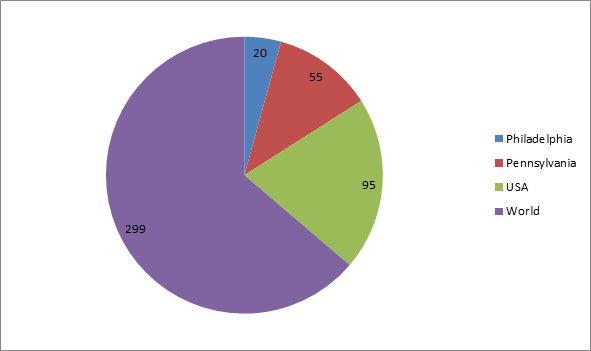
- University of Pennsylvania
- Drexel University
- Temple University
- Thomas Jefferson University
- La Salle University
- Philadelphia University
- Saint Joseph's University
- Penn Dermatology
- Penn Vet Dermatology
- Dermatology Cooper University Health Care
Top Universities in USA:
- Stanford University
- University of California, Berkeley
- University of Chicago
- Yale University
- University of California, Los Angeles (UCLA)
- Duke University
- University of Washington
- University of California, Santa Barbara
- Washington University in St Louis
- University of Minnesota
Top Universities Around the World:
- University of Pennsylvania
- University of California
- Newyork University
- University of Michigan Medical School
- Emory University
- Columbia University
- Thomas Jefferson University
- University of Pittsburgh
- Johns Hopkins Medical Institutions

- The Children's Hospital of Philadelphia
- Childrens Hospital Dermatology
- Dermatology - Jeanes Hospital
- Hahnemann University Hospital
- University of Iowa Hospitals and Clinics
- Comprehensive Pediatric Hospital Medicine
- Penn Medicine
- Hospital of the University of Pennsylvania
- Comprehensive Pediatric Hospital Medicine
- Hahnemann University Hospital
- Children's Hospital of Pittsburgh
- Saint Vincent Hospital
- Lankenau Hospital
- Evangelical Community Hospital
Hospitals Associated with Dermatology Research in USA:
- Massachusetts General Hospital
- New York Presbyterian Hospital
- Brigham and Women's Hospital
- Arrowhead Health Centers
- Elite Clinical Studies, LLC
- California Clinical Trials Medical Group, Inc
- Loma Linda University Clinical Trial Center
- California Center for Clinical Research
Hospitals Associated with Dermatology Research around the World:
- Kubba Clinic
- The Queen Elizabeth Hospital
- Sakra World Hospital
- New York Presbyterian Hospital
- Shanghai Renai Hospital
- London Bridge Hospital
- UCSF Medical Centre
- Rady Children’s Hospital
- Jeanes Hospital
- One World Hospital
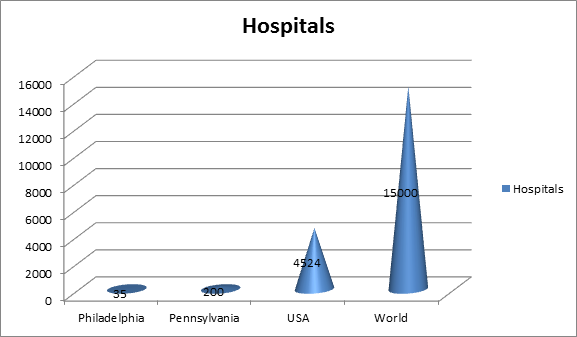
Figure 3: Hospitals Associated with Dermatology
Source: Reference 3
Glance at Dermatology Industry:
The Dermatologisty industry has increasingly expanded into cosmetic dermatology, with more dermatologists offering anti-aging procedures such as dermabrasion, laser treatments and Botox. These treatments have proven to be a high-growth sector for the industry and have contributed to the industry's consistently high profit margins. During the next five years, industry revenue is expected to grow. Steadily falling unemployment and the continued implementation of healthcare reform will yield greater insurance coverage for Americans, increasing demand for dermatologist offices. The baby boomer generation especially will generate a large portion of demand, particularly for skin cancer screenings and anti-aging procedures.
Market Growth of Dermatology Research in the last and upcoming ten years:

Figure 4: Dermatology Market Growth Analysis
Products manufactured by the industry related Dermatology Research:
- Dermatology Consultants, P.C. - Provides medical, surgical, and cosmetic care services.
- Dermatology Clinics of Southwest Virginias, PLLC - Drmatology services through skin care centres.
- Dermatology Associates of Wisconsin S.C. - Provides medical, surgical, and cosmetic care services.
- Integrated Dermatology Group - provides practice management services for active dermatologists.
- Northeast Dermatology Associates - Mohs surgery and dermatopathology.
- Medical Management, Inc. - Management services to dermatology practices that are owned by physicians.
- West Dermatology - Skin cancer, acne, eczema, psoriasis, and rosacea.
Fund Allotment to Dermatology Research:
- National Institutes of Health (NIH) Medical Research Scholars Program (MRSP) allot $33,700.
- Doris Duke International Clinical Research Fellowship (ICRF) allot $29,000.
- Global Health Equity Scholars (GHES) Fellowship allot.
- Howard Hughes Medical Institute (HHMI) Medical Research Fellows Program allot $29,000.
- The CDC Experience Applied Epidemiology Fellowship.
- Melanoma Research Foundation (MRF) Medical Student Research Grant allot $3,000.
- American Skin Association (ASA) Medical Student Grant Targeting Melanoma allot $7,000 renewable for one year.
- American Academy of Dermatology (AAD) Diversity Mentorship Program allot $1500
- American Dermatological Association (ADA) Medical Student Fellowship allot $700 per month, up to 3 months.
References:
- http://www.dermnetnz.org/doctors/societies.html
- http://www.4icu.org/us/pennsylvania/
- http://hospitals.webometrics.info/en
To share your views and research, please click here to register for the Conference.
To Collaborate Scientific Professionals around the World
| Conference Date | June 19-20, 2017 | ||
| Sponsors & Exhibitors |
|
||
| Speaker Opportunity Closed | Day 1 | Day 2 | |
| Poster Opportunity Closed | Click Here to View | ||
Useful Links
Special Issues
All accepted abstracts will be published in respective Our International Journals.
- Journal of Clinical & Experimental Dermatology Research
- Clinical Dermatology Research Journal
- Journal of Aging Science
Abstracts will be provided with Digital Object Identifier by















